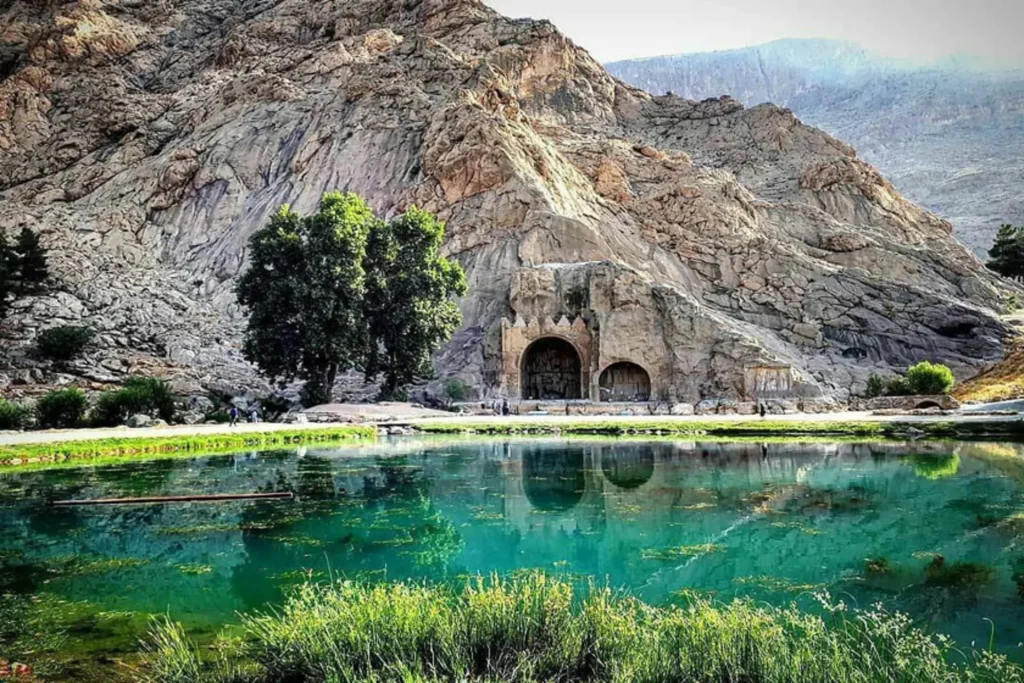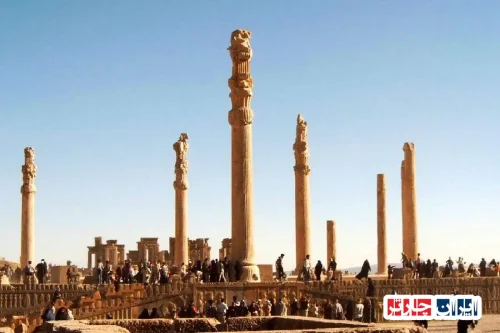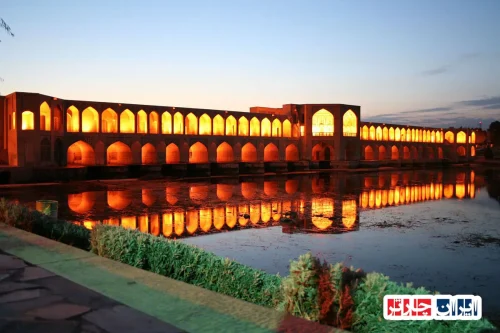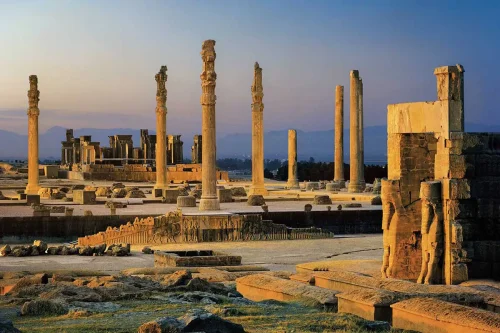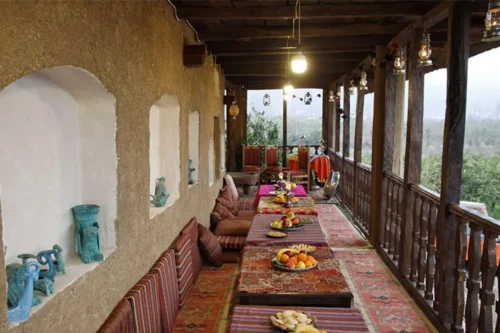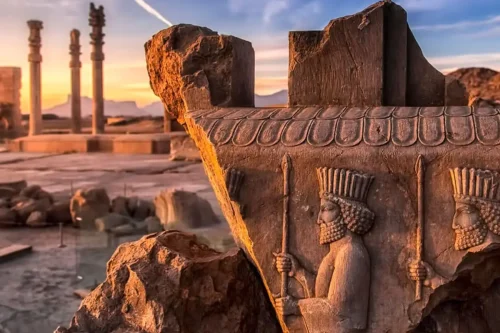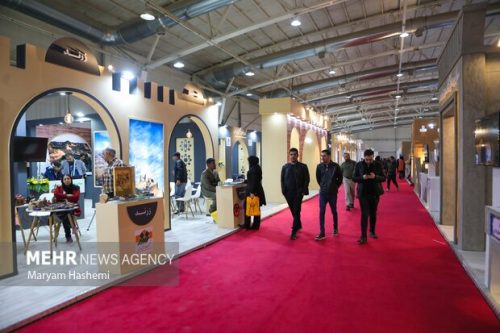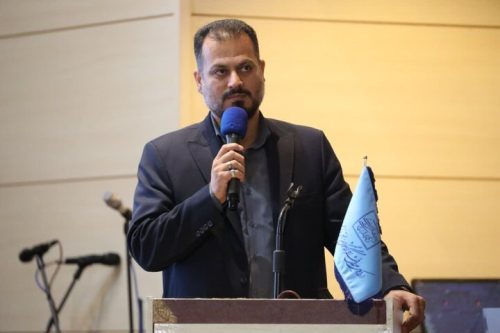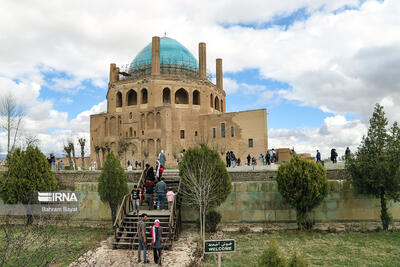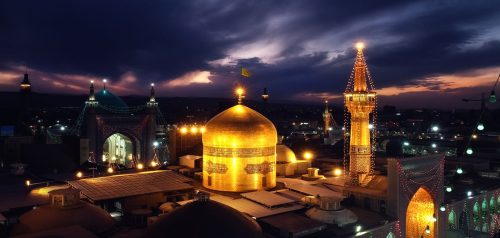From Bisotun to Taq Bostan: Kermanshah’s Journey as Western Iran’s Emerging Tourism Hub
Kermanshah stands today as a compelling blend of ancient history and modern vibrancy, inviting travelers to explore its multifaceted treasures. The region’s evolution from timeless monuments to a dynamic center of cultural tourism is evident in every stone and story. For centuries, visitors have marveled at the relics that narrate the tale of this land—its winding legends and enduring traditions. One cannot help but be drawn into the narrative that unfolds from Bisotun to Taq Bostan: Kermanshah’s Journey as Western Iran’s Emerging Tourism Hub, where historical grandeur meets vibrant contemporary expression. The journey is marked not only by awe-inspiring archaeological wonders and majestic rock reliefs but also by the warm welcome of locals whose lives are interwoven with this heritage. Today, the region is celebrated for its seamless blend of nature, art, and history, making every visit a memorable encounter with time itself. The remnants of ancient empires, encapsulated in intricately carved inscriptions and monumental bas-reliefs, offer a window into eras when Kermanshah was a nexus of cultural exchange and innovation. These captivating sites have inspired numerous travelers and scholars alike, all seeking to understand the layers of civilization that have enriched Western Iran’s cultural landscape.
The allure of Kermanshah is further intensified by the natural scenery that frames its historical sites. Majestic mountains and rolling plains provide a serene backdrop to the vivid stories of the past. Each visitor’s journey—whether drawn by academic curiosity or the desire for a picturesque escape—finds resonance in the enduring legacy of this ancient land. The phrase “From Bisotun to Taq Bostan: Kermanshah’s Journey as Western Iran’s Emerging Tourism Hub” is echoed in the very experiences of those who wander through its streets and monuments, as they witness firsthand how history, nature, and urban development harmoniously converge. Exploring the region is akin to walking through a living museum where every turn and every view tells a story. Traditional bazaars, vibrant street art, and modern infrastructures provide clues to the city’s constant reinvention, allowing old traditions to flourish alongside new ambitions. Visitors often remark on the surprising juxtaposition between time-worn heritage and contemporary progress. Whether it is in the study of ancient rock carvings or in the enjoyment of local culinary specialties prepared by families who have inherited recipes through generations, every moment in Kermanshah offers an enriching sensory experience. The enduring significance of the archaeological treasures is complemented by the palpable energy of today’s community, which proudly embraces its past while forging a modern identity. In this evolving landscape, the historical significance of sites such as Bisotun is continually reinterpreted through the lens of modern tourism, offering insights not only into ancient civilizations but also into the future of cultural preservation and sustainable travel.
As one delves deeper into the narratives of Kermanshah, the integrative concept of “From Bisotun to Taq Bostan: Kermanshah’s Journey as Western Iran’s Emerging Tourism Hub” takes on a profound significance. The region is not merely a repository of antiquities; it is a vibrant, living chapter of history that melds the wisdom of past eras with the innovations of the present. Every stone carved by ancient hands tells a story of human endeavor and aspiration, while modern developments speak to an invigorated spirit of growth and connectivity. The cultural tapestry of Kermanshah is rich with influences from diverse communities that have shaped its social and historical fabric over millennia. This interconnectedness makes the region an ideal destination for those seeking a deeper understanding of heritage tourism. From the intricate details of rock reliefs to the sweeping landscapes that surround them, the area inspires contemplation and wonder. Travelers are often encouraged to immerse themselves fully in local traditions, engage with native storytellers, and sample regional cuisine that has been perfected over centuries. Such immersive experiences not only provide enjoyment but also foster an authentic appreciation for the layers of culture that have defined Kermanshah through time. In a setting where every vista is punctuated by historical significance and natural beauty, the journey from Bisotun to Taq Bostan remains emblematic of both the enduring past and the promising future of tourism in Western Iran. The narrative is one of transformation—a seamless transition where history informs modernity and where cultural pride fuels innovative perspectives on travel and community development.
Historical Legacy and Cultural Significance of Kermanshah Tourism
Kermanshah has long been celebrated as one of western Iran’s richest repositories of history and culture, a living testimony to the artistry and resilience of past civilizations. From ancient monuments to enduring traditions, this region offers travelers an immersive experience where each stone, inscription, and carved relief tells a story. The allure of monumental sites such as Bisotun and Taq Bostan plays a pivotal role in establishing the area’s reputation. Indeed, the renowned journey “From Bisotun to Taq Bostan: Kermanshah’s Journey as Western Iran’s Emerging Tourism Hub” encapsulates this deep historical narrative. The passage of time has only enriched Kermanshah’s historic ambience, where every ancient relic serves as a bridge to eras marked by remarkable cultural achievements and architectural innovation. Here, heritage is not simply preserved—it is celebrated, with local communities and cultural custodians ensuring that the legacy of Kermanshah continues to inspire. This dedication to maintaining historical authenticity, combined with modern interpretations of cultural expression, makes the region an invaluable destination for history enthusiasts and curious travelers alike. The transformation of Kermanshah into a dynamic center of tourism is evident in the harmonious blend of ancient allure and contemporary charm, inviting visitors to explore an ever-evolving narrative of tradition and progress.
Iconic Historical Attractions: From Bisotun to Taq Bostan
At the heart of Kermanshah’s tourist appeal lie its iconic historical attractions, most notably the enduring legacy enshrined in the phrase “From Bisotun to Taq Bostan: Kermanshah’s Journey as Western Iran’s Emerging Tourism Hub.” The region’s ancient wonders are legendary, with Bisotun offering captivating inscriptions and monumental reliefs that date back to the Achaemenid era, while Taq Bostan boasts intricate rock carvings from the Sassanian period. These sites, steeped in millennia of history, serve not only as archaeological marvels but also as cultural bookmarks that outline the evolution of art, architecture, and governance in ancient Persia. The elaborate details preserved within these relics attract scholars, historians, and tourists dedicated to unearthing the secrets of the past. Moreover, the interplay between these monumental sites and modern urban development creates a magical dialogue between history and contemporary cultural expression. As visitors traverse ancient pathways and scenic vistas, they experience firsthand how historical depth continues to influence modern identity and tourism, making Kermanshah a beacon for those in search of authentic cultural encounters.
Natural Wonders and Scenic Landscapes of Kermanshah
Beyond its rich historical tapestry, Kermanshah is equally renowned for its stunning natural landscapes that complement its cultural heritage. The region’s diverse environment presents natural attractions such as ancient caves, expansive wetlands, and serene lakes, each contributing to the narrative of “From Bisotun to Taq Bostan: Kermanshah’s Journey as Western Iran’s Emerging Tourism Hub.” These natural wonders offer a dramatic backdrop to the historical monuments, inviting visitors to experience a seamless dialogue between nature and human creativity. Whether trekking through rugged terrains, exploring cavernous geological formations, or marveling at the reflective beauty of quiet water bodies, tourists can immerse themselves in nature’s gallery of colors and textures. The interplay of sunlit vistas, rolling hills, and meticulously preserved natural habitats creates an environment of tranquility and discovery. In every sense, Kermanshah’s natural attractions not only enhance the visitor experience but also highlight the profound connection between environmental splendor and Iran’s historical evolution. This dynamic combination fosters an atmosphere where adventure meets reflection, leaving an indelible impression on all who journey through this diverse landscape.
Flourishing Nowruz Tourism and Seasonal Celebrations
Nowruz, the Persian New Year, heralds a period of cultural revival and dynamic tourism in Kermanshah, adding another vibrant layer to its storied heritage. During this celebrated season, local communities come alive with festivities, showcasing traditional music, dance, and culinary delights that reflect centuries-old customs. The spirit of renewal encapsulated in Nowruz resonates deeply with the ethos of “From Bisotun to Taq Bostan: Kermanshah’s Journey as Western Iran’s Emerging Tourism Hub,” where historical splendor meets festive modernity. As travelers converge on this region to experience the transformative energy of spring, they are treated to a unique fusion of ancient rituals and contemporary cultural expressions. The influx of visitors sparks a vibrancy that not only bolsters the local economy but also reinforces the commitment to preserving and promoting cultural heritage. Traditional bazaars, street performances, and community gatherings contribute to an immersive experience that captures the essence of Iranian hospitality and resilience. In celebrating Nowruz, Kermanshah reaffirms its role as a regional hub for cultural tourism, where every event bridges the gap between a rich past and a promising, dynamic future.
Modern Transport Infrastructure Fuelling Tourism Growth
A significant contributor to the burgeoning tourism sector in Kermanshah is the modernized transport infrastructure that now connects this historical region more efficiently than ever before. Recent investments in road networks, public transportation, and urban development have transformed accessibility, making it easier for travelers to embark on the celebrated journey “From Bisotun to Taq Bostan: Kermanshah’s Journey as Western Iran’s Emerging Tourism Hub.” Enhanced connectivity has not only reduced travel times but has also improved the overall visitor experience, creating a seamless link between age-old landmarks and contemporary amenities. Upgraded infrastructure has led to the establishment of new routes and the revitalization of traditional pathways, ensuring that both history enthusiasts and leisure travelers can navigate the region with ease. Robust transport networks serve as the lifelines that connect remote archaeological sites with bustling urban centers, offering comprehensive services that span from sophisticated design to practical functionality. This synergy between tradition and modernity is a critical element of Kermanshah’s appeal, reflecting a conscious effort to honor the past while paving the way for future explorations. With each new development, Kermanshah not only preserves its historical integrity but also evolves into a focal point for innovative tourism.
Economic Impact and Job Creation Through Tourism Expansion
Tourism in Kermanshah plays a vital role in bolstering the local economy, with its extensive historical and natural attractions acting as major drivers of growth. The narrative “From Bisotun to Taq Bostan: Kermanshah’s Journey as Western Iran’s Emerging Tourism Hub” is emblematic of a region that has evolved from a mere custodian of ancient relics into a powerhouse of economic opportunity. As visitor numbers continue to swell—drawn by the promise of immersive historical and scenic excursions—local businesses thrive, and diverse sectors such as hospitality, dining, and transportation experience noticeable growth. The influx of tourists has translated into substantial job creation, providing avenues for entrepreneurial initiatives and permanent employment within the community. Economic initiatives driven by cultural tourism have further catalyzed infrastructural improvements and social development, ensuring that the benefits of tourism are widely distributed among local populations. By harnessing the region’s vast potential and embracing innovative service models, Kermanshah has positioned itself as a beacon of sustainable economic progress—one that not only celebrates its illustrious heritage but also nurtures future prosperity and social wellbeing.
Challenges and Opportunities in Developing Kermanshah Tourism
Despite its impressive array of attractions and rapid modern advancements, Kermanshah faces a unique set of challenges as it continues to evolve as a tourism destination. The acclaimed journey “From Bisotun to Taq Bostan: Kermanshah’s Journey as Western Iran’s Emerging Tourism Hub” brings with it the responsibility to strike a delicate balance between growth and preservation. As this historic region lures increasing numbers of both domestic and international tourists, issues such as environmental conservation, heritage management, and infrastructural strain come to the forefront. The challenge lies in maintaining the integrity and authenticity of centuries-old monuments while meeting modern expectations for safety, comfort, and accessibility. However, these challenges also open up opportunities for innovation—whether through adaptive reuse of historical sites, sustainable tourism practices, or the integration of digital technologies for enhanced visitor engagement. By focusing on collaborative strategies and community-centric solutions, stakeholders are well-positioned to address pressing concerns while unlocking new prospects for growth. This proactive approach ensures that Kermanshah not only evolves as a vibrant hub of tourism but also continues to honor and preserve its extraordinary cultural legacy.
Collaborative Efforts and Unified Vision for Tourism Enhancement
The sustained success of Kermanshah’s tourism sector is deeply rooted in the collaborative efforts of governmental bodies, local communities, and private enterprises. Guided by a unified vision encapsulated in “From Bisotun to Taq Bostan: Kermanshah’s Journey as Western Iran’s Emerging Tourism Hub,” diverse groups have come together to elevate the visitor experience while safeguarding historical treasures. This spirit of partnership is visible in joint cultural events, infrastructural projects, and community-driven initiatives aimed at enhancing the overall quality of tourist services. By pooling resources and aligning strategic objectives, stakeholders have successfully created a dynamic environment where tradition and modernity coexist harmoniously. The integrated approach not only improves practical aspects such as transportation, sanitation, and public safety but also reinforces cultural pride and communal identity. As collaborative frameworks evolve, they pave the way for innovative tourism models that emphasize sustainability, inclusivity, and quality. The ongoing dialogue between different sectors underlines a shared commitment to creating an inviting destination—a place where every visitor feels both welcomed and connected to the region’s profound historical narrative.
Future Prospects and Visionary Developments in Kermanshah Tourism
Looking ahead, the future of Kermanshah’s tourism landscape is imbued with promise and potential. The region’s illustrious past, exemplified by the enduring theme “From Bisotun to Taq Bostan: Kermanshah’s Journey as Western Iran’s Emerging Tourism Hub,” sets the stage for visionary developments that fuse historical preservation with modern innovation. With ongoing investments in infrastructure, technology, and cultural programs, Kermanshah is steadily transforming into a premier destination that shines on the global tourism map. Initiatives aimed at uncovering lesser-known heritage sites, implementing sustainable tourism practices, and leveraging digital platforms for enhanced visitor engagement are paving the way for a new era of exploration. As the tourism industry continues to evolve—driven by changing traveler expectations and dynamic market conditions—the emphasis on cultural authenticity paired with state-of-the-art facilities underscores Kermanshah’s commitment to progress. The forward-thinking strategies being implemented today not only ensure that the region’s storied past is honored but also guarantee that future generations can experience its extraordinary legacy. In this brave new chapter, Kermanshah stands poised to redefine the standards of cultural tourism, merging timeless history with the innovative spirit of modern travel.
Frequently Asked Questions
- What historical and cultural features does Kermanshah offer?
- Kermanshah is renowned for its rich history and vibrant culture, showcased through ancient sites like Bisotun and Taq Bostan that reflect the legacy of various eras.
- How significant is Bisotun in attracting tourists?
- Bisotun is a UNESCO World Heritage site that reflects the Achaemenid era, drawing both local and international visitors with its monumental inscriptions and historical significance.
- What role does Taq Bostan play in the region’s history?
- Taq Bostan stands as a testament to the Sassanian era, featuring impressive rock reliefs that narrate the historical and artistic achievements of ancient Kermanshah.
- What natural attractions can visitors explore in Kermanshah?
- Tourists can enjoy natural wonders such as the Quri Qal’eh Cave, Hashelan Wetland, and Niloufar Spring, which offer scenic landscapes and diverse ecosystems.
- How is the growth of Nowruz tourism in Kermanshah defined?
- During Nowruz, Kermanshah experiences a significant surge in visitors, with tourism growth rates between 10% to 25%, emphasizing the city’s rising prominence as a cultural destination.
- What impact does the public transportation fleet have on tourism services?
- Improvements in public transportation, including increased efficiency of minibuses and coaches, have greatly enhanced accessibility to tourist attractions and overall visitor satisfaction.
- Why is tourism infrastructure crucial in Kermanshah?
- Investments in tourism infrastructure such as accommodation, transportation, and local services have elevated visitor experiences and contributed to the region’s economic development.
- How has Kermanshah evolved into a tourism hub in western Iran?
- By combining its rich historical heritage with modern amenities and improved service standards, Kermanshah has become a beloved destination for travelers exploring western Iran.
- What do passenger transport statistics during Nowruz indicate?
- Data during Nowruz shows a remarkable increase of up to 25% in passenger movements compared to previous years, underscoring growing visitor confidence in local transportation services.
- How is the interaction between tourists and local services facilitated?
- Enhanced coordination among service providers and seamless transportation networks ensure that tourists enjoy a hassle-free experience while exploring Kermanshah’s attractions.
- How does cultural heritage contribute to attracting visitors?
- The region’s abundant cultural heritage, preserved through well-maintained ancient sites and ongoing restoration projects, plays a key role in captivating history enthusiasts.
- In what way does increased tourism drive local economic growth?
- A thriving tourism sector leads to job creation, improved local incomes, and attracts further investments, thereby fueling broader economic development in the region.
- What unique experiences do tourists have when visiting historical sites?
- Visitors gain an immersive insight into the past as they explore landmarks like Bisotun and Taq Bostan, leaving them with lasting memories of Kermanshah’s storied legacy.
- How is effective tourism management achieved in the region?
- Through regular assessments, coordinated efforts among various authorities, and continuous improvements in services, Kermanshah demonstrates robust planning and management in its tourism sector.
- What are the future expectations for tourism in Kermanshah?
- With ongoing investments and steadily increasing visitor numbers, Kermanshah is expected to strengthen its position as a premier destination, offering even better experiences in the years to come.
- What benefits does choosing Iran Charter offer to travelers?
- Iran Charter is dedicated to providing seamless travel experiences with reliable services, expert guidance, and curated itineraries to ensure that every visitor enjoys the best of what Kermanshah and other destinations in Iran have to offer.

